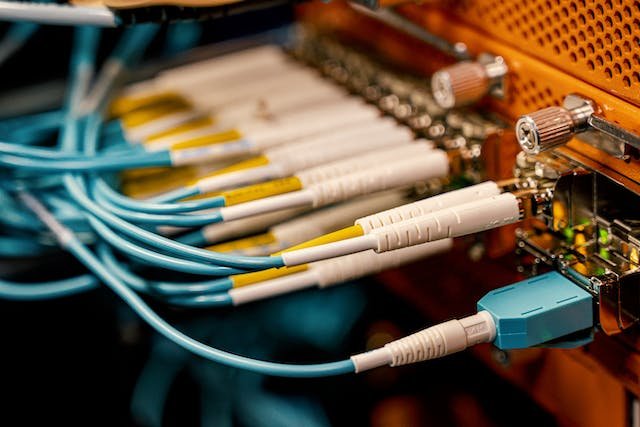From Copper to Light: Understand the Shift to Fiber Optics
Within the constantly changing field of telecommunications, the switch from copper to fiber optics signifies a fundamental change in the manner that which data is sent. Witnessing the emergence of a new era in connectivity, wherein beams of light supersede the limitations of copper requires a comprehensive understanding of this revolutionary expedition. Let’s explore the nuances of this change and discover the amazing possibilities of fiber optics.
1. The Limitations of Copper: A Legacy Left Behind
Due to its conductivity, copper has been the foundation of communication for many years. It is an ideal material for transferring electrical impulses. However, as technology developed and the need of people for data increased, copper’s limits became apparent. Long-distance signal deterioration in copper wires causes slower data transfer rates. Copper is also prone to electromagnetic interference, which jeopardizes the signal’s integrity even more. Although fundamental, the legacy of copper turned into a roadblock in the pursuit of quicker, more dependable communication. The necessity to get around these restrictions led to the switch from copper to fiber optics.
2. The Light-Speed Revolution: Unleashing Fiber Optics
The idea of data transmission at the speed of light is fundamental to the fiber optic revolution. Light pulses in fiber optics face little resistance, unlike electrical signals in copper cables, which enables them to travel great distances with little attenuation. Fiber optic cable networks are able to attain data transmission speeds with light that were not possible with copper. This is a jump into a new world of possibilities, not a gradual change. To understand the core of the fiber optics-driven revolution in light speed, picture a highway where the speed restrictions are set by the rules of physics rather than the medium.
3. Fiber Optic Architecture: Building the Network of Tomorrow
Gaining an understanding of fiber optic networks’ design is essential to appreciating its transformational potential. The transmitter, the optical fiber cable, and the receiver are the three primary parts of a conventional fiber optic system. Electrical impulses are transformed into optical signals by the transmitter and then sent over the fiber optic connection. The light pulses via TIR are guided by the cable, which is made up of a cladding layer and a core. The optical signals are transformed back into electrical impulses at the receiving end. This deceptively simple design serves as the foundation for the complex network that allows for the previously unheard-of rates of data transfer.
4. Optical Versatility: Beyond Data Transmission
Fiber optics may be used for purposes other than data transmission. Applications for the same infrastructure that transformed telecoms may be found in many other industries. For example, fiber optic sensors use the principles of light reflection to monitor strain, pressure, and temperature. Because of their adaptability, fiber optics are positioned to foster innovation in a wide range of sectors in addition to serving as communication conduits. Fiber optics are essential to the medical industry because they enable high-resolution imaging during minimally invasive treatments such as endoscopy. Fiber optics is a research and development tool that helps to progress technologies like quantum communication.
5. Fiber Optics and Cybersecurity: Fortifying Digital Connections
A strong layer of protection comes with the switch to fiber optics. Fiber optics are less vulnerable to outside manipulation because they can withstand electromagnetic interference better than copper cables can. Data transfer gains an intrinsic security measure from the very nature of light transmission via glass fibers. Fiber optic networks increase the secrecy of digital communications since they are harder to access than conventional copper-based systems. Data integrity benefits from security as well. Fiber optics guarantee that the sent data reaches its destination in its original format with the least amount of signal loss.
6. Economic Impact: Catalyzing Innovation and Growth
Not only is the switch to fiber optics a technical advancement, but it also stimulates creativity and economic expansion. Fiber optic networks’ improved connection serves as the foundation for new technologies like 5G, smart cities, and Internet of Things applications. Fiber optics’ dependability and speed enable companies to go into uncharted territory, promoting an environment that is both inventive and productive. Fiber optics transcend geographic divides to enable cooperation and worldwide economic activity, from telemedicine to remote work.
Conclusion
In summary, the switch from copper to fiber optics represents a bright step toward the future of communication, not merely a technical advancement. Fiber optic networks enable the speed of light to surpass the constraints of copper, revolutionizing communication, innovation, and overall well-being. The move to fiber optics is evidence of human inventiveness, from the complexities of TIR to the economic revival prompted by improved connection. You are not only adopting a new medium; rather, you are entering the bright future of communication as you make your way across this shifting terrain.




